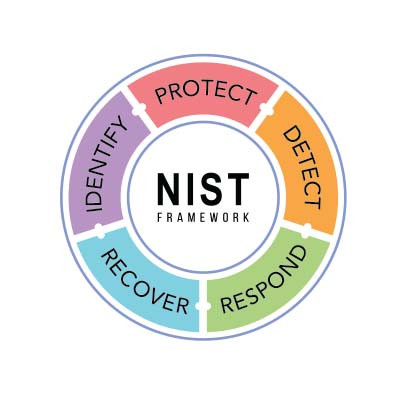- Home
- About Us
- IT Services
- Managed IT Services
- @Home
- @Work
- @School
- @Worship
- Outsourcing your IT
- Remote Workforce
- vCIO
- IT Consulting
- Comprehensive IT Support
- Remote Monitoring & Maintenance
- IT Vendor Management
- Co-Managed IT
- VMware
- 24/7 Help Desk
- Microsoft Hyper-V
- Professional Server Support
- Business Computing Assessment
- Staffing Services
- Desktop Monitoring and Management
- Cybersecurity Services
- Cybersecurity Overview
- Dark Web Monitoring
- Phishing Simulation
- Network Security
- Fully Hosted Security as a Service
- Cisco Security Solutions
- SOPHOS Security Solutions
- Unified Threat Management
- Content Filtering
- Access Control Solutions
- Endpoint Security Solutions
- Mobile Device Management
- Email Encryption
- Spam Protection
- Compliance Standards
- Penetration Testing
- Multi Factor Authentication
- Security Cameras
- Asset Tracking
- Cloud Computing Services
- Industry Specific
- IT for Healthcare Providers
- IT for Manufacturing
- Supply Chain and Logistics
- IT for Engineers and Architects
- IT for Insurance Companies
- IT for Accountants
- IT for Nonprofits
- Human Resources as a Service
- IT for Education
- IT for Hospitality
- Residential Computer Repair
- Point-of-Sale Technologies
- Health Care IT
- Electronic Medical Records
- IT for Dentists
- IT for Law
- Retail IT
- eManagement
- IT for Financial Services
- Data Services
- Hardware Services
- Software Services
- Business Communication
- Media & Internet Services
- Managed IT Services
- Understanding IT
- Blog
- Support
- Contact Us
- Home
- About Us
-
IT Services
-
Managed IT Services
- @Home
- @Work
- @School
- @Worship
- Outsourcing your IT
- Remote Workforce
- vCIO
- IT Consulting
- Comprehensive IT Support
- Remote Monitoring & Maintenance
- IT Vendor Management
- Co-Managed IT
- VMware
- 24/7 Help Desk
- Microsoft Hyper-V
- Professional Server Support
- Business Computing Assessment
- Staffing Services
- Desktop Monitoring and Management
-
Cybersecurity Services
- Cybersecurity Overview
- Dark Web Monitoring
- Phishing Simulation
- Network Security
- Fully Hosted Security as a Service
- Cisco Security Solutions
- SOPHOS Security Solutions
- Unified Threat Management
- Content Filtering
- Access Control Solutions
- Endpoint Security Solutions
- Mobile Device Management
- Email Encryption
- Spam Protection
- Compliance Standards
- Penetration Testing
- Multi Factor Authentication
- Security Cameras
- Asset Tracking
- Cloud Computing Services
-
Industry Specific
- IT for Healthcare Providers
- IT for Manufacturing
- Supply Chain and Logistics
- IT for Engineers and Architects
- IT for Insurance Companies
- IT for Accountants
- IT for Nonprofits
- Human Resources as a Service
- IT for Education
- IT for Hospitality
- Residential Computer Repair
- Point-of-Sale Technologies
- Health Care IT
- Electronic Medical Records
- IT for Dentists
- IT for Law
- Retail IT
- eManagement
- IT for Financial Services
- Data Services
- Hardware Services
- Software Services
- Business Communication
- Media & Internet Services
-
Managed IT Services
- Understanding IT
- Blog
- Support
- Contact Us
We Define IT Consulting
This NIST-Supported Cybersecurity Framework has Robust Benefits
A well-structured framework is essential for establishing effective, consistent policies and strategies. This applies to many areas—including network security. Today, we’re diving into the National Institute of Standards and Technology (NIST) cybersecurity framework, which outlines steps to help safeguard your business.
The NIST framework comprises five essential functions: Identify, Protect, Detect, Respond, and Recover.
Identify Threats
You can’t defend against a threat you don’t understand. Start by identifying the potential threats to your business assets and resources. This includes understanding the hardware, software, and supply chain that support your business, as well as adhering to regulatory guidelines to protect these resources. Knowing what to protect—and against whom—helps you assess risk and determine appropriate safeguards.
Protect Against Threats
Once you understand the risks, implement protective measures such as:
- Access controls to limit unauthorized access to data and systems.
- Data security to ensure confidentiality and controlled access to critical information.
- Routine maintenance to keep systems updated and secure, maximizing uptime.
- Staff training aligned with their access levels.
In addition, consider a business continuity strategy—beyond NIST recommendations—to identify your minimum operational requirements.
Detect Threats
It’s not about whether an attack will happen, but when. Your cybersecurity solutions should be able to detect threats in real-time, alerting you to any suspicious activity. These alerts are crucial to ensuring your defenses are functioning effectively. If you aren’t detecting potential threats as they emerge, you could be left to deal with major vulnerabilities.
Respond to Threats
The goal is to detect and respond to threats quickly, minimizing their impact on your operations. Have a clear, reliable incident response policy in place. Address the immediate threat, mitigate residual risks, and keep communication open with affected parties like customers, vendors, employees, and local authorities.
After addressing an incident, review the attack to learn how to improve your defenses for the future.
Recover from Threats
Even after neutralizing a threat, recovery is an essential step. Use your business continuity plan to restore interrupted services and implement a well-defined recovery strategy to get your company back on track. Focus on restoring critical systems, learning from the incident, and improving to prevent future issues. Keep all stakeholders, including customers, staff, and partners, informed of your recovery progress.
Protecting Your Business
While these five steps may seem extensive, they highlight the importance of cybersecurity to your business’ resilience. Don’t wait until an incident occurs—prepare now with solid strategies and systems.
We Define IT offers reliable IT resources to support your security needs. To learn more, reach out to us today at 888-234-WDIT (9348) .
About the author
Mr. Angaza has been changing the face of IT service for over 20 years. His unending commitment to technical excellence is only outmatched by his dedication to customer service and satisfaction.
Don't have an Account Yet?
You have to register to leave a comment, register here.


Comments